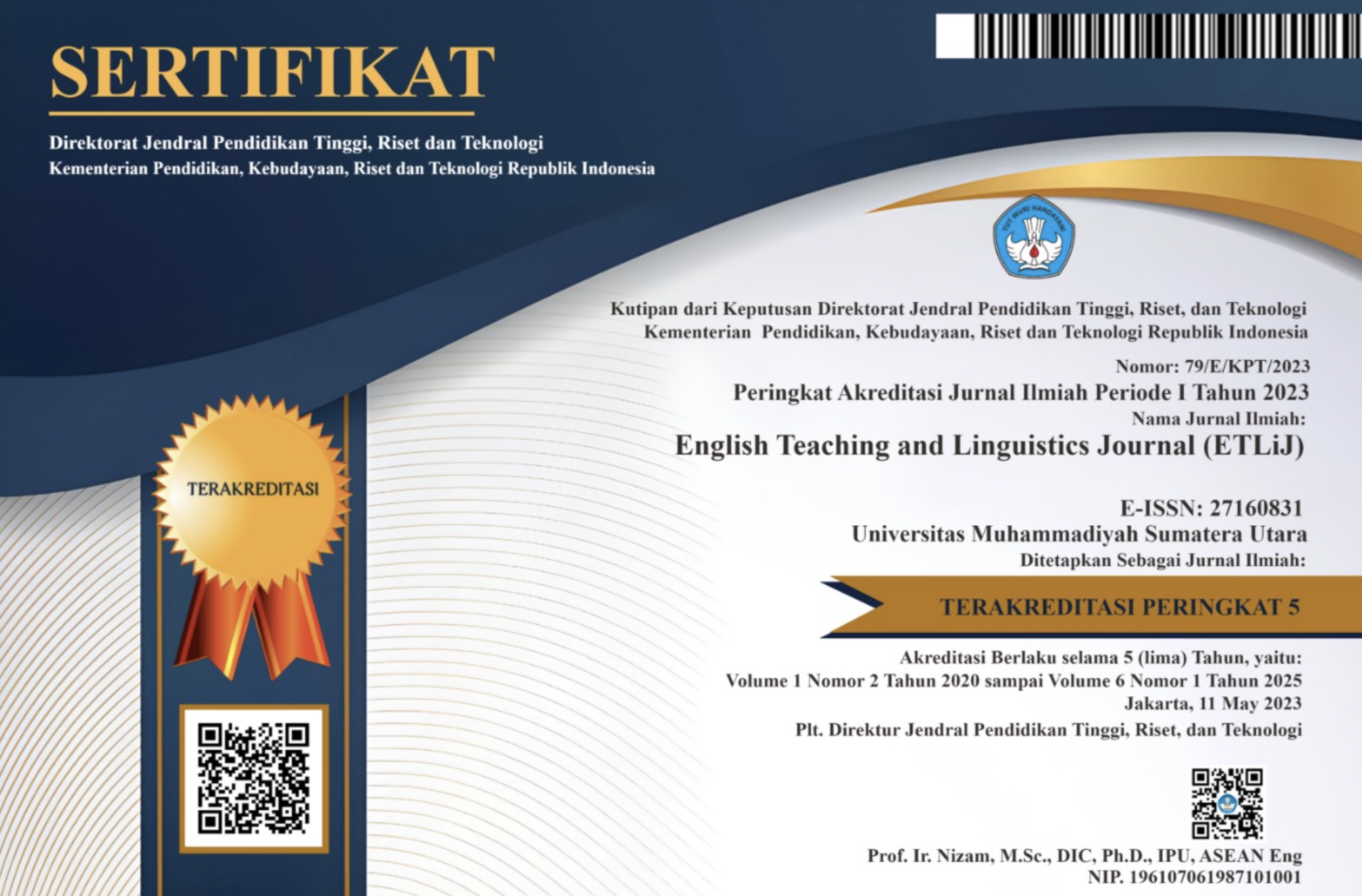A Forensic Linguistics Study of Provocative Speech Acts by Politicians on Social Media Platforms
Abstract
Keywords
Full Text:
PDFReferences
Azweed, M., Radzuwan, A.R., Kamariah, Y., Shireena, B., Saadiyah, D., Razali, M., and Kamali, S.M. (2018). Speech Acts in the Facebook Status Updates Posted by an Apostate. International Journal of English Linguistics, 8(4), 226-231.
Chaer, A. (2014). Linguistik Umum Edisi Revisi. Jakarta: Rineka Cipta.
Coulthard, M dan A. Johnson (2010). The Routledge Handbook of Forensic Linguistics. London: Routledge.
Plomp, T. (2013). Educational design research: An introduction. In T. Plomp, N. Nieveen (Eds.), Educational design research (pp. 10-51). Enschede: Netherlands Institute for Curriculum Development (SLO).
Hamuddin, B., Syahdan, S., Rahman, F., Rianita, D., and Derin, T. (2019). Do They Truly Intend to Harm Their Friends?: The Motives Beyond Cyberbullying among University Students. International Journal of Cyber Behavior, Psychology, and Learning (IJCBPL), 9(4), 32-44.
Hamuddin, B., Rahman, F., Pammu, A., and Sanusi, B. T., and Derin, T (2020). Cyberbullying Among EFL Students Blogging Activities: Motives and Proposed Solutions. Teaching English with Technology, 20(2), 3-20.
Harun, J.P., Isnaini, D.S., Yakub, N., Koesoemo, R., Ratnasari, D., Norliza, J., and Nadarajan,T. (2020). Speech Acts of Hate Speech in the Discourse of ILC Talkshow TVONE: Literature Study on Humanity Using Psychopragmatic Perspective. Psychology and Education Journal, 57(8), 1044-1053.
Khairatunnisa, and Ngusman, A.M. (2021). Analysis of Illocutionary Speech Acts on Students Social Media Post and Comments. Seloka: Jurnal Pendidikan Bahasa dan Sastra Indonesia, 10(1), 62-67.
Leech, G. (1983). Principles of Pragmatics.London: Longman.
McMenamin. (2002). Forensic Stylistic. Amsterdam: Elsevier.
Nadar, F.X. (2009). Pragmatik dan Penelitian Pragmatik. Jakarta: Graha Ilmu.
Nasrullah, R. (2015). Media Sosial: Perspektif Komunikasi, Budaya, dan Sosioteknologi. Bandung: Simbiosa Rekatama Media.
Olsson, J. (2004). Forensic Linguistics (second edition). New York: Continuum International Publishing Group.
Pusat Bahasa. (2008). Kamus Besar Bahasa Indonesia. Jakarta: Gramedia.
Santoso, I. (2013). Mengenal Linguistik Forensik: Linguis sebagai Saksi Ahli. Yogyakarta: Universitas Negeri Yogyakarta.
Sholihatin, E. (2019). Linguistik Forensik dan Kejahatan Berbahasa. Yogyakarta: Pustaka Belajar.
Suhariyanto. (2019). Linguistik Forensik: Sumbangsih Kajian Bahasa dalam Penegakan Hukum. ADIL Indonesia Jurnal, 1(1), 36-50.
Susanto. (2017). Potensi dan Tantangan Forensik Linguistik di Indonesia. ILSIA, 3, 5-7.
Verhaar, J.W.M. (2016). Asas- asas Linguistik Umum. Yogyakarta: Gajah Mada University Press.
Weda, S., Atmowardoyo, H., Rahman, F., and Sakti, A.E.F. (2021). Linguistic Aspects in Intercultural Communication (IC) Practices as A Higher Education Institution in Indonesia. European Language Scientific Journal, 14, 2-6.
Wijana, I.D.P. (1996). Dasar dasar Pragmatik. Yogyakarta: Penerbit Andi.
Yule, G. (1996). Pragmatics. Oxford: Oxford University Press.
DOI: https://doi.org/10.30596/etlij.v3i2.10429
Refbacks
- There are currently no refbacks.

This work is licensed under a Creative Commons Attribution 3.0 License
ISSN: 2716-0831





